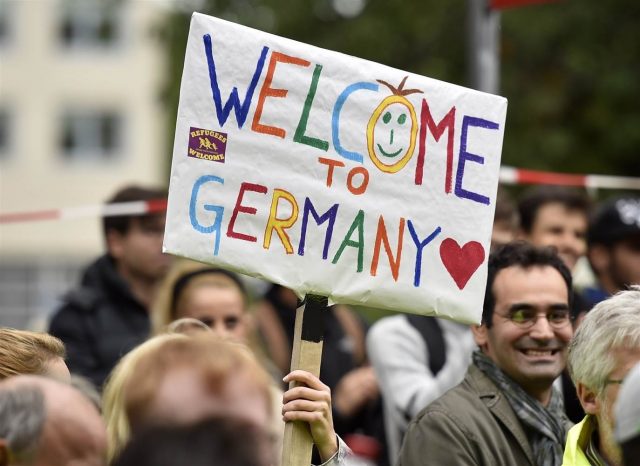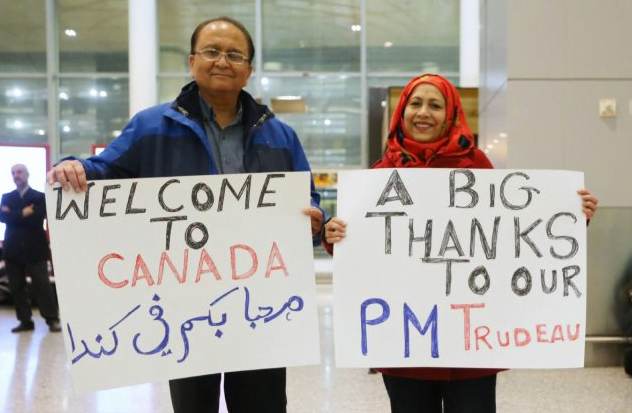By Sakshi Ranjan
More than 65 million people have been displaced around the world. This is the highest number since the Second World War. Some countries where these conflicts are arising have more media coverage than the others but the plight of the people remains the same.
The Trump administration is fighting hard to maintain its temporary ban on those refugees who don’t have a close family relation with someone already in the country from entering the United States.

In June, thanks to the Supreme Court, the federal courts ruling went into effect in a modified form that refugees shouldn’t be included in the government’s travel ban as each refugee has a “bona fide relation” with the US-based not for profit organisation that has agreed to resettle him or her (to find housing and a job, help them learn English, and acclimate them to America within 90 days).
After constant pressure from the courts and a public backlash, President Trump now plans to give preferential treatment to refugees deemed more capable of “successful assimilation” into the American society. The administration plans to reduce the number of refugees allowed in the US to 45,000 which will be the lowest since the resettlement programme which began in 1980.
On the other end of the spectrum, we have the countries like Canada and Germany that frequently make headlines for their contributions to the crisis. But there are also many other countries helping out with the crisis who don’t get as much attention. United States and the Trump administration could sure benefit a lot from borrowing a chapter from the books of these nations.
Germany:

U.S. News compiled data regarding the amount of refugees welcomed by countries around the world. In the same it has been mentioned that, around 686,000 permanent immigrants have been received by Germany in the year 2015, out of which around 82,000 came to Germany for the sole purpose of family reunification.
The immigrants who specifically came to Germany to reunite with their families belonged to the countries Syria, Turkey, and Russia. Around 722,000 first-time asylum applications were received by the country in the year 2016 and these applications belonged to refugees from Syria, Afghanistan, and Iraq.
Germany is considered the hub of of wealth and job opportunities which is why most immigrants travel to and through Europe hoping to reach Germany.
Canada:

The same data also mentions that in the year 2015, around 271,800 permanent immigrants were received by Canada, which has been the highest since the year 2010 out of which more than 170,000 were admitted under the economic category.
Refugees made up the largest percentage of permanent migration in 2016 in Canada. more than 40,000 Syrian refugees have been resettled by Canada between November 2015 and January 2017.
France:

France is commended for its efforts as it accepted 256,500 permanent immigrants in 2015. New residence permits were granted to approximately 217,000 non-EU nationals, out of which, a third belonged to North African and sub-Saharan African countries. In the same year, Labour immigration increased by about 8% .
It was reported that when the progressive Emmanuel Macron stood against the anti-EU Marine LePen at the 2017 presidential election, and at the end of which Emmanuel Macron won the race, applications for asylum in 2016 rose to around 26% – the most in French history.
Also Read: How Can We Respond To The Refugee Crisis?
Australia:

According to the list compiled by U.S. News, around 226,000 permanent immigrants were accepted by Australia in 2015. Australia also granted over and above 17,000 visas during their Humanitarian Program in 2015-2016. These visas were distributed to asylum-seekers from Afghanistan, Iraq, Myanmar, Syria, and the Democratic Republic of Congo.
Australia announced it would accept an unspecified number of Refugees from the US-led program in Costa Rica as per the deal with the former president Barack Obama, and in return, the US would accept around 1,250 refugees who were rejected by Australia.
President Trump has since dubbed this as the “worst deal ever”.
Italy:

The same list mentions that, approximately 160,900 permanent immigrants were accepted by Italy in 2015, resulting in the increase in the total number of foreign nationals living in Italy to around 5 million, a third of which were born in the EU, and the other two-third originated from Romania, Albania, Morocco, China, and Ukraine.
Switzerland:

According to the data, In 2015, Switzerland accepted approximately 131,200 permanent immigrants and nearly 2 million foreigners were living in Switzerland by the end of 2016, These 2 million foreigners are equivalent to about a quarter of the country’s population.
Trump’s main reason for not accepting refugees in the United States is because according to him these refugees are like “trojan horse”. Trump is tapping on to serious anxiety among people regarding the country’s serious security issues and worries about terrorism.
What Trump is ignoring here is that US refugee vetting system is the most rigorous in the western world. The total screening process can take anywhere from 18 months to 2 years and it involves multiple federal intelligence and security agencies who carry out a series of security screenings and checks.
The refugees coming to the US are the most vulnerable in the conflict-stricken zones. Many are women, children, religious minorities and victims of violence or torture. What the President needs to realise is that by not accepting the Syrian refugees he is helping the ISIS in establishing their claim that the western world does not want to help the Muslims and that their ultimate salvation does lie in the Islamic State.
Mr. President, these refugees will not kill you, Sir.
Image Credits: Google Images
Other Recommendations:
http://edtimes.in/2017/09/pro-refugee-india-is-right-in-deporting-rohingyas-worlds-most-persecuted-minority-of-sunni-muslims/



























